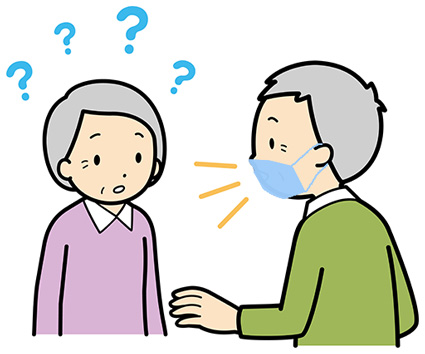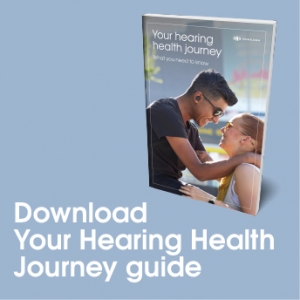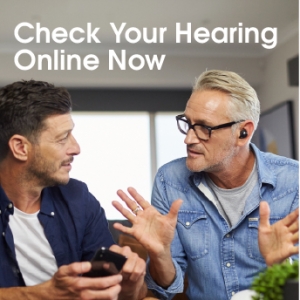 Many nations, cities, and businesses still have mask mandates in place as part of their COVID-19 prevention efforts. As a result, many people continue to wear them voluntarily to slow the spread of the highly contagious virus. While face masks are effective for this purpose, they make communication harder, especially for those with hearing challenges.
Many nations, cities, and businesses still have mask mandates in place as part of their COVID-19 prevention efforts. As a result, many people continue to wear them voluntarily to slow the spread of the highly contagious virus. While face masks are effective for this purpose, they make communication harder, especially for those with hearing challenges.
Voices sometimes sound muffled behind a face mask. Masks also inhibit those trying to read lips or see expression. And social distancing means conversations often take place further apart than usual, or sometimes even through a Plexiglas barrier.
For those using hearing aids or cochlear implants, wearing a face mask with ear loops becomes uncomfortable over time. All in all, the pandemic has made conversing more difficult in a multitude of ways.

There are a number of ways to address the issue. Consider investing in transparent face masks, learning non-verbal cues, or other minor behavioral modifications such as speaking louder. Simple steps will help people at all ends of the hearing spectrum meet the challenges of communicating while wearing masks.
How to Improve Communication When Wearing a Face Mask
Before speaking, make sure you have the other person’s attention by calling their name or waving to them. Because face masks muffle voices, people may not be aware that someone is trying to speak to them otherwise.
Here are some additional tips to make conversation less frustrating and more productive:
- Two people engaged in conversation should face each other. Neither should attempt to speak while standing behind or to the side of the other person.
- Talking louder helps voices travel though masks better, allowing people to hear what was said the first time. The same is true of speaking slower.
- To make up for the inability to see facial expression, use your hands more during conversation. Alternatively, try raising your eyebrows when making an important point.
- Use affordable hearing devices like IQbuds2 MAX to enhance speech and reduce distracting background noise.
Many deaf people rely on lip reading in everyday conversation. Masks with no lip visibility make this infinitely harder + impossible for some. BUT the onus cannot be on the marginalised to adapt. Here’s what you can do to help. Resources in thread below #deaftwitter #medtwitter pic.twitter.com/CN0Z8bTZOd
— Annie Evans (@AnnieEvans2010) October 16, 2020
- The person speaking should pause frequently to make sure the other person understands what they have said. Be patient and realize others may need to write key phrases down or repeat themselves more often than usual.
- It may be necessary for speakers to rephrase what’s already been said and provide additional supporting details when speaking through a mask, whether the person listening has hearing issues or not.
- Whenever wearing a mask, conversation should take place in a quiet environment. Turn off potential distractions such as a dishwasher at home or a printer at work before starting conversation.
Other Considerations
If wearing traditional or transparent face masks while speaking, asking if there’s anything that would improve conversation is advised. This simple offer and acknowledgement is helpful.
A person with hearing issues may want to move to a quiet area, sit or stand face to face, or request another type of accommodation. Honoring these requests goes a long way to inspire confidence and trust. This is especially important at a time when everyone must deal with a significant amount of stress and extra challenges.
People with hearing aids or cochlear implants have additional challenges when it comes to wearing masks. However, creative solutions may help to overcome them. For example:
- Consider wearing a face shield instead of a face mask.
- Secure the over-ear loops to a headband. This prevents the loops from placing pressure on the top of the ears.
- Wear a bandana, neck gaiter or other non-looped type of face mask
Asking People to Wear a Clear Mouth Mask Can Help
According to a study conducted by audiologists at Ohio State University, wearing a mask reduces the volume of speech by up to 12 decibels. The exact decibel reduction depends on the thickness and types of materials used to construct the mask.
With nearly three-quarters of people over age 70 having some type of hearing loss, the combined impact of social isolation and wearing masks when going out in public can be devastating.
Audiologists across the country began advocating for transparent face masks with a clear window early on in the pandemic. They recognized the extra burden that wearing masks and speaking to other people wearing masks placed on people with mild to severe hearing loss.
Transparent face masks with clear material over the mouth area provides the recommended protection against COVID-19. It also enables those with hearing challenges to watch for facial expressions and to read lips.
https://twitter.com/theclearmask/status/1384869398419288065
With the COVID-19 pandemic making communication more difficult for everybody, it’s more important than ever to do what we can to hear each other.


